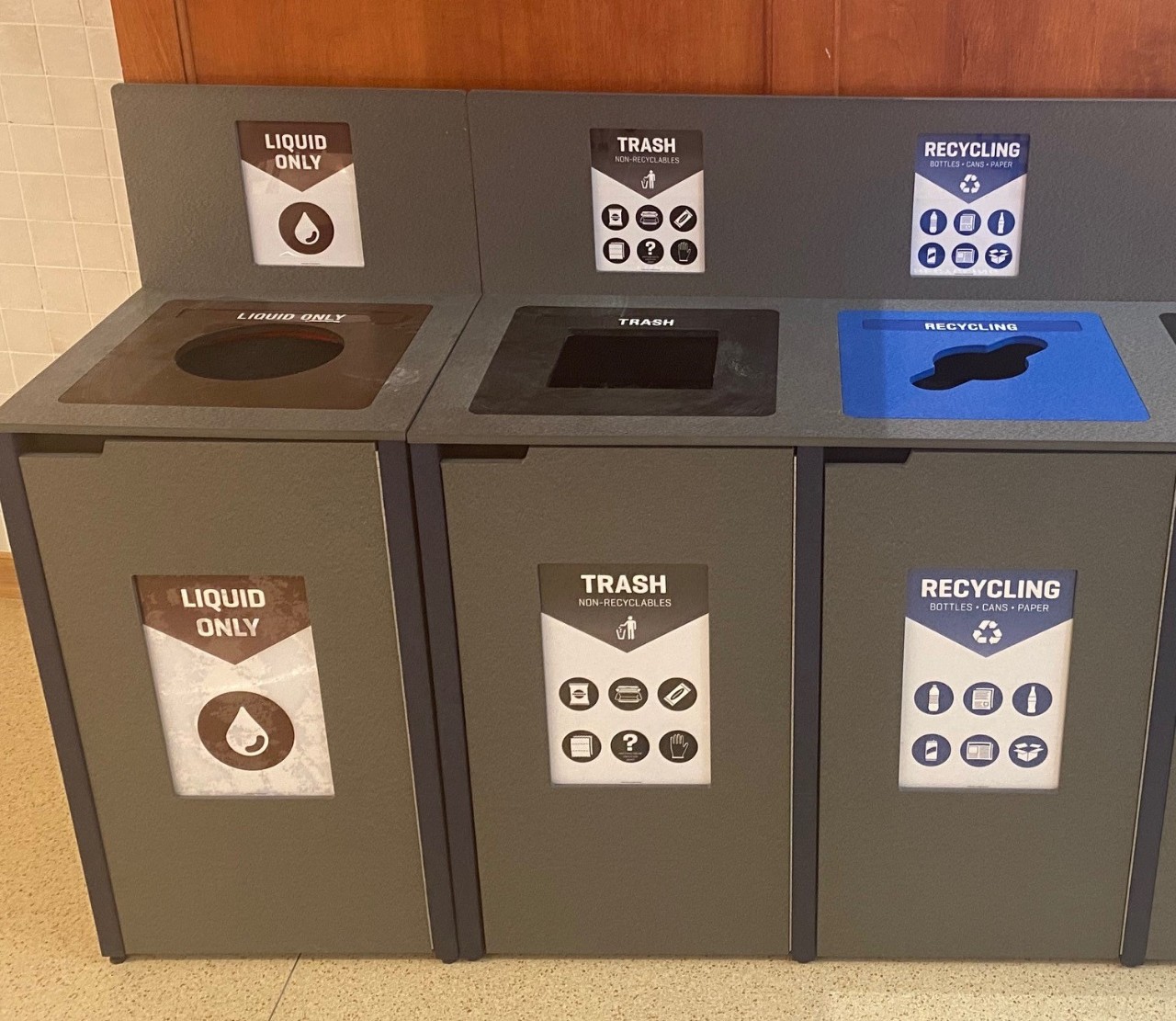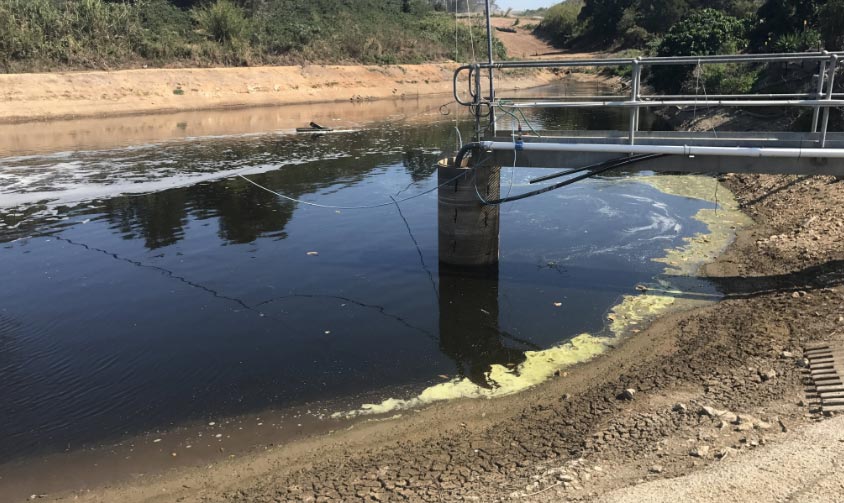Ingenious Industrial Wastewater Treatment Solutions: Shielding the Atmosphere
Ingenious Industrial Wastewater Treatment Solutions: Shielding the Atmosphere
Blog Article
Understanding the Comprehensive Refine of Liquid Garbage Disposal: Best Practices and Environmental Impact Factors To Consider
The administration of fluid garbage disposal is a complex problem that needs a thorough understanding of different ideal practices and their connected environmental influences. From the kinds of fluid waste created to the techniques used for collection, therapy, and last disposal, each step plays a crucial role in protecting ecosystems and public health. As governing criteria progress and innovation breakthroughs, the conversation around these processes comes to be increasingly relevant. What ramifications do these changes hold for future sustainability initiatives, and just how can stakeholders make certain that they are sufficiently resolved?
Kinds of Fluid Waste
Recognizing the different sorts of liquid waste is important for reliable monitoring and disposal methods. Liquid waste can be broadly classified right into numerous types, each calling for unique handling and treatment approaches.
Industrial liquid waste commonly consists of harmful materials, including heavy steels, solvents, and chemicals, produced throughout making processes. These wastes require rigorous governing conformity to secure human wellness and the setting. Domestic liquid waste primarily refers to wastewater generated from homes, including sewage and greywater, which, although less poisonous, can still position substantial risks if poorly taken care of.
Agricultural liquid waste, including runoff from farms, typically contains fertilizers and chemicals that can cause ecological destruction otherwise treated sufficiently. Medical liquid waste, created from healthcare facilities, consists of polluted fluids such as bodily liquids and chemicals, calling for specialized disposal methods to stop infection and environmental contamination.
Finally, oil and oil waste, usually produced by restaurants and automotive industries, can trigger serious blockages in sewer systems otherwise handled effectively. Understanding these classifications helps with targeted strategies for therapy, compliance with policies, and effective disposal methods, ultimately advertising environmental sustainability and public health safety and security.

Collection Techniques
Reliable collection techniques are vital for the correct administration of liquid waste, guaranteeing that it is collected safely and effectively prior to therapy or disposal. Various methods are utilized depending on the sort of fluid waste produced, the volume, and the certain attributes of the waste.
One typical approach is the use of specialized collection containers or sumps, which are created to capture fluid waste at the source. These systems often include pumps that help with the transfer of waste to bigger storage space containers or treatment centers. Furthermore, mobile collection devices furnished with vacuum technology are used in situations where waste is produced intermittently or in hard-to-reach areas.
For industrial setups, closed-loop systems can effectively reduce leaks and spills, permitting the recovery and reuse of fluid waste. It is likewise necessary to train workers on correct collection methods to mitigate dangers connected with dangerous materials.
Moreover, carrying out normal maintenance schedules for collection tools makes sure optimum efficiency and security. The assimilation of sophisticated monitoring systems can improve collection effectiveness by supplying real-time data on waste levels and prospective hazards. On the whole, effective collection techniques are fundamental to sustainable fluid waste monitoring practices.
Treatment Processes
Treatment procedures play a vital duty in the monitoring of fluid waste, transforming possibly dangerous products into safe effluents or recyclable resources - liquid waste disposal. These processes can be extensively categorized into physical, chemical, and organic techniques, each tailored to attend to details contaminants present in the waste stream
Physical treatment techniques, such as sedimentation and purification, work by eliminating put on hold solids and particle issue. These methods are frequently the very first action in the therapy chain, effectively decreasing the load on succeeding processes. Chemical therapies include using reagents to neutralize harmful substances, speed up hefty metals, or oxidize natural toxins, thereby improving the safety and security of the effluent.
Biological therapy procedures, including activated sludge systems and anaerobic food digestion, take advantage of the all-natural capacities of microbes to deteriorate raw material. These approaches are specifically effective for wastewater having naturally degradable toxins. Advanced therapy technologies, such as membrane layer purification and advanced oxidation processes, are increasingly used to attain higher levels of purification.
Integrating a combination of these treatment methods not just guarantees compliance with regulative requirements however also promotes environmental sustainability by recouping beneficial resources from liquid waste.
Disposal Options
How can organizations make sure the accountable and risk-free disposal of fluid waste? Reliable disposal options are vital for guarding public health and wellness and the atmosphere. The primary methods consist of land incineration, therapy, and visit this web-site disposal adhered to by discharge right into community wastewater systems.
Land disposal includes the careful control of liquid waste in marked land fills, ensuring that it does not seep right into surrounding dirt or water. Incineration, on the other hand, subjects fluid waste to high temperatures, converting it right into ash and gases, which require proper purification to reduce exhausts. This approach appropriates for unsafe wastes that can not be dealt with through traditional means.
In cases where liquid waste can be dealt with, organizations might select chemical or biological treatment procedures to neutralize unsafe components prior to discharging the dealt with effluent into community systems. This course usually lines up with governing demands, making sure that the effluent fulfills safety and security criteria.
Eventually, companies have to carry out detailed analyses of each disposal option to establish its practicality, taking into consideration aspects such as waste make-up, governing compliance, and possible risks to health and the setting. By selecting proper disposal techniques, organizations can contribute to an accountable waste monitoring approach.
Ecological Impact
The ecological impact of liquid waste disposal is a critical consideration for organizations looking for to lessen their ecological impact. Visit Website Additionally, the discharge of untreated or inadequately dealt with waste into surface waters can result in eutrophication, leading to oxygen deficiency and the succeeding fatality of fish and other microorganisms.

To minimize these effects, organizations should adopt finest methods such as applying extensive waste treatment procedures, advertising recycling and reuse, and sticking to regulative requirements. By taking an aggressive approach to liquid waste monitoring, entities can significantly decrease their ecological impact while sustaining lasting growth objectives. Inevitably, a comprehensive understanding of the ecological effects connected with liquid garbage disposal is important for notified decision-making and liable stewardship of natural deposits.
Final Thought
Reliable administration of liquid waste is critical for securing ecological honesty and public health. By embracing ideal practices in treatment, disposal, and collection, alongside adherence to governing criteria, the potential for dangerous contamination of ecosystems can be significantly minimized. Continual innovations in technology and processes add to sustainable waste monitoring initiatives. Ultimately, a comprehensive understanding of liquid waste disposal not only alleviates environmental effects but likewise cultivates a commitment to responsible resource monitoring and environmental stewardship.
The monitoring of fluid waste disposal is a diverse problem that needs a comprehensive understanding of different finest techniques and their linked environmental impacts. From the types of liquid waste generated to the methods utilized for collection, treatment, and final disposal, each step plays a crucial function in securing communities and public health and wellness.The ecological impact discover this of liquid waste disposal is an essential factor to consider for companies seeking to decrease their environmental footprint. Inevitably, a comprehensive understanding of the environmental effects associated with fluid waste disposal is necessary for informed decision-making and liable stewardship of natural sources.
Ultimately, a detailed understanding of fluid waste disposal not just minimizes ecological impacts however additionally cultivates a dedication to responsible resource management and environmental stewardship.
Report this page